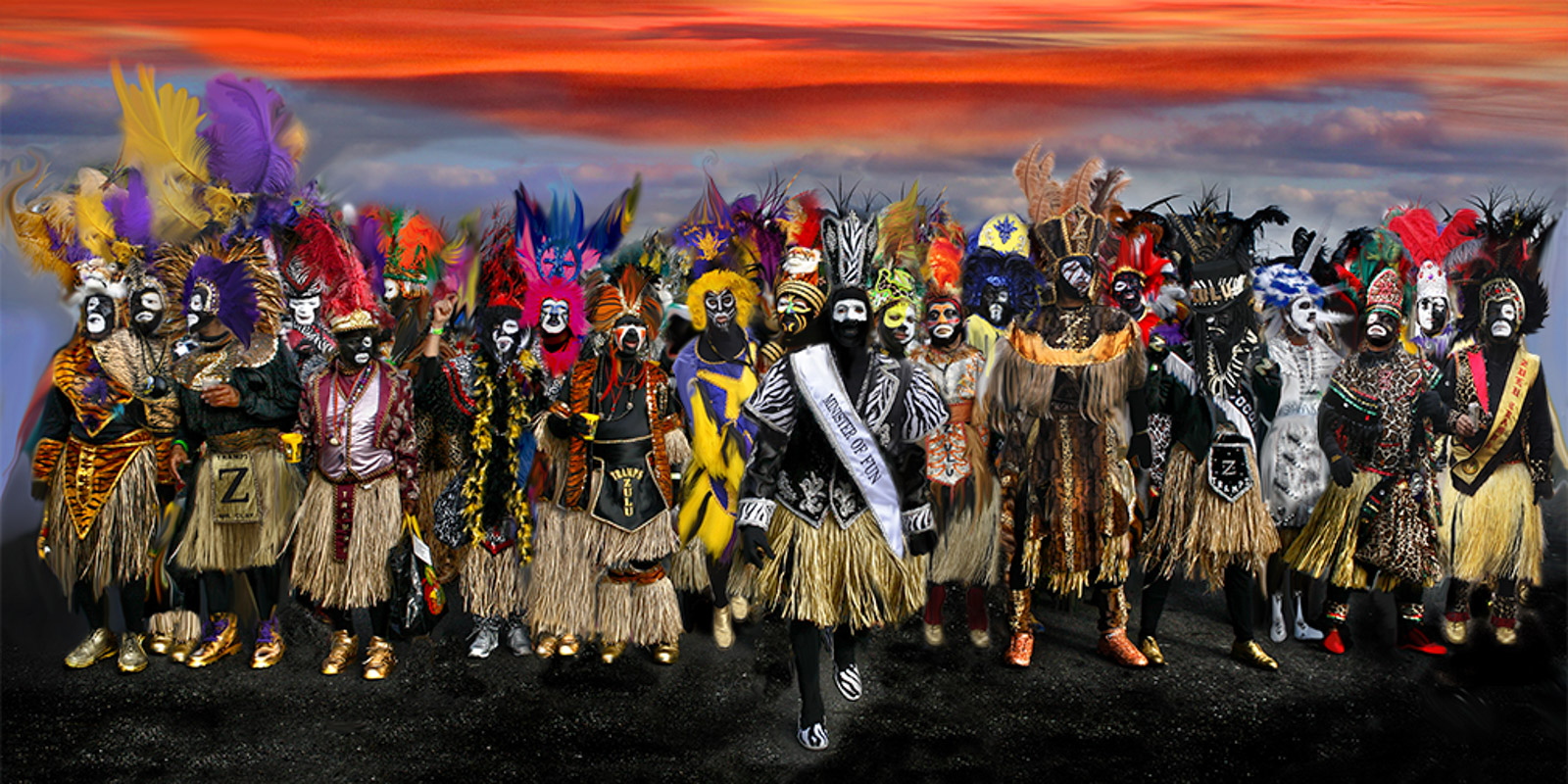A gathering of Zulu characters, with the Minister of Fun front and center
DuBois combined multiple photos to highlight the Zulu Social Aid and Pleasure Club’s walking contingents, the Tramps and Soulful Warriors.
“Fantasy moments” on parade
When New York photojournalist and artist Lisa DuBois arrived in New Orleans for her first Mardi Gras in 2010, she had little inkling of the mania engulfing the city. For the most part indifferent to sports, she hadn’t even watched the Super Bowl game that had sent the city into ecstatic convulsion when the Saints prevailed over the Indianapolis Colts to claim their first championship title.
She didn’t know what to expect when she arrived at the staging area for the Krewe of Bacchus parade, not long before a phalanx of policemen escorted Saints quarterback Drew Brees, who was reigning as Bacchus LXII, to his float. But as the parade began to roll, she found herself experiencing something extraordinary.
“The energy that I felt just permeated through my entire body,” she recalled. “I felt like I had been there when the Saints won. I became one with the people and how they felt.”
The pervasive excitement carried over to the Zulu parade on Mardi Gras. “Everybody was extremely animated,” she recalled, in part because the krewe was celebrating its 100th anniversary.
She positioned herself near the start of the parade, along Jackson Avenue where no barricades separated viewers from participants. “I had a front-row view of the excitement generated upon seeing the Zulu characters just walk down the street.” A certain “madness” took hold. Spectators, hollering and frantically waving their arms, weren’t just after souvenir coconuts but “trying to get a touch of Zulu.” Members of the club’s elaborately attired walking contingents, the Tramps and Soulful Warriors, accompanied by brass bands, reveled in the frenzy.
“For one day, they get to be the celebrity. Police have to move out of their way as they walk down the street. It’s like they’re royalty.”
DuBois has long found herself drawn to parades and the zone between fantasy and reality, where participants transition from the prosaic into a transcendent “fantasy moment.” New York, with an abundance of cultural and ethnic-heritage parades, is fertile terrain. Events like the Coney Island Mermaid Parade and the National Puerto Rican Day Parade, she says, are best appreciated as a social art form — providing a framework for co-existence and the flourishing of multiculturalism, while also, in the face of the homogenizing influence of mass culture, functioning as conduits for the retention and multigenerational transmission of cherished traditions and folkways. The same can be said, certainly, for parade-crazy New Orleans.
But nothing in New York quite prepared DuBois for one of the most distinctive, and at times controversial, aspects of Zulu.
“As a female of color, I found the makeup… more than interesting,” she said. “I felt it was creative and colorful, and did not fit into the category, to me, of [racially offensive] blackface.”
The walking Zulus DuBois encountered that day become the basis for a dazzling piece of photo art: a composite printed on canvas and accented with brushstrokes of acrylic paint. The one and only Minister of Fun, Larry Roy, is front and center. He’s flanked by a colorful array of characters who make individualized sartorial statements based on a common aesthetic.
DuBois wound up captivated not only by Zulu but also other exemplars of African American Carnival: Black Masking Indians, Baby Dolls and the Northside Skull and Bone Gang. These traditions, especially in their early incarnations, occupied a realm apart from the “official” festivities, from which people of color were excluded. So, like jazz musicians, they improvised. Carnival became a vehicle expressing ritual freedom and empowerment; for challenging dominant white standards of beauty and decorum; and for celebrating African American cultural difference.
As DuBois’ documentary work attests, these practices continue to evolve and thrive, offering sustenance for the soul and the senses.
Explore African American Carnival through the lens of Lisa DuBois:
MardiGrasTraditions.com

